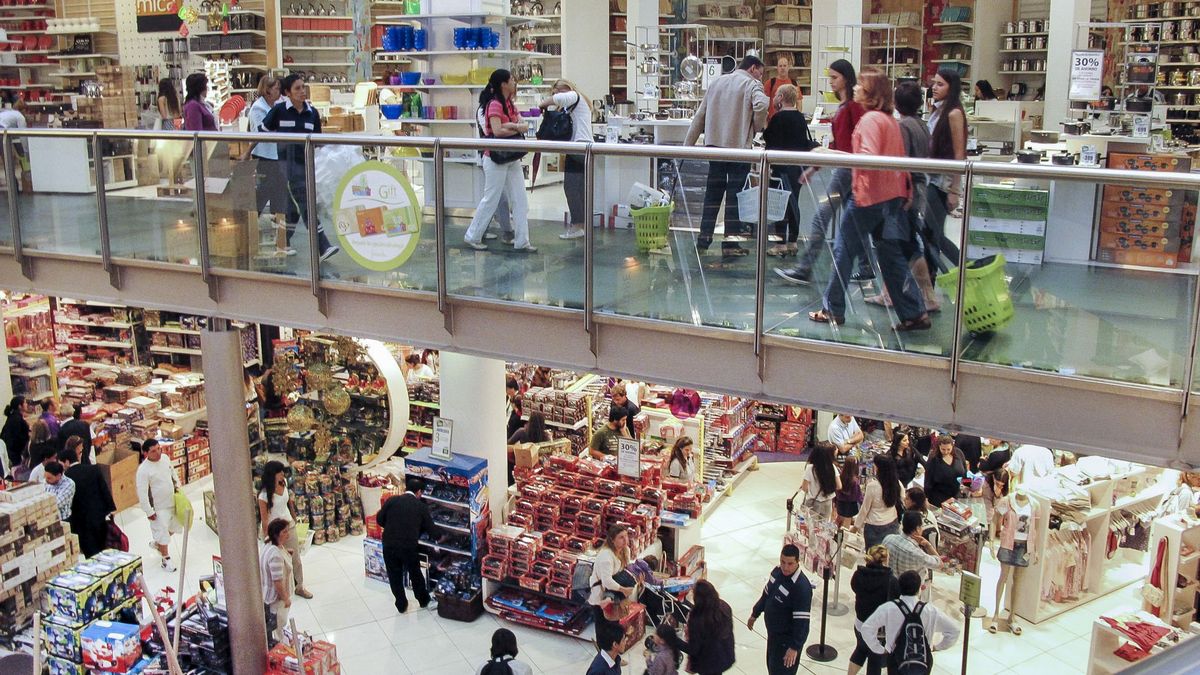Consumption began to grow more strongly in the interior of the country as a result of the boom in border tourismdue to the advantage in exchange rate that foreigners have, and for the recovery of the agricultural sectorwhich is preparing to have a very good harvest in 2024.
This is indicated by a study by the specialized consulting firm Scentiawhich indicates that sales grow more in interior businesses than in the metropolitan area.
The trend began to be noticed in the first half of the year, but it was consolidated in recent months, when the price of the Dolar blue he went very high, and It even exceeded 1,000 pesos.
As tourists are recognized by businesses dollar at marginal market value, The comparative advantage for visitors from abroad, such as Chileans, Brazilians, Paraguayans, Bolivians and Uruguayans, is very notable.
In this way, the massive consume shows more dynamism in supermarkets and local businesses in the interior of the country, compared to those located in the metropolitan area of Buenos Aires (AMBA).
The latest report of INDEC on the behavior of wholesale self-service stores, which is from August, showed that the sales At current prices in the Autonomous City of Buenos Aires they registered a percentage variation of 147.1% compared to the same month of the previous year, a little above annualized inflation.
In the 24 matches of Greater Buenos Aires, the variation was 134.1%; and in the rest of the country, the increase was much greater: 158%.
Consumption: comparison according to region
So far in 2023, thes total market sales They recorded an average increase of 1.1% until September, according to data from Scentia. But while they rose 3.8% in the interior of the country, they fell 2.9% in the AMBA points of sale.
In principle, this shows that the drop in purchasing power Faced with inflation – close to 140% annually – it is felt more in these areas, while in the interior of the country, for different reasons, consumption shows better results.
Osvaldo del Río, director of Scentia, explains that some causes of this behavior must be sought “between the improvement of the countryside in recent months, the better competitive position of neighborhood businesses (due to the lower presence of chains in less populated cities), the bases of comparison with respect to last year and the situation at the borders, which is very strong.
Del Río highlights the key role played by populations of neighboring countries who live in border areas and consume in Argentina, because it is much cheaper for them due to the exchange rate.
P7 – border (ambitoc_opt.jpeg
Exodus. The diversion of consumption outside borders affects businesses on the Uruguayan coast.
The most notable case is the sale of gasoline in Missions, where numerous Paraguayan and Brazilian motorists drink, for example. Also in Mendoza, where supermarkets are visited by many Chilean customers. Another aspect that affects the phenomenon is the tourist movement that occurs during long weekends, basically due to the increase in the cost of trips abroad.
Other analysts also point out that in eIn the metropolitan area, consumption suffered more strongly by removal of subsidies and increase in transportation, tolls and services.
Instead, they explain that inside, the composition is different. The money available in consumers’ wallets is greater, in this sense, than in the Capital where there were more increases that deteriorated people’s purchasing power.
Another phenomenon that supermarkets detected is that before the elections, consumers rushed to buy, making advance sales, which then flattened out.
Source: Ambito




